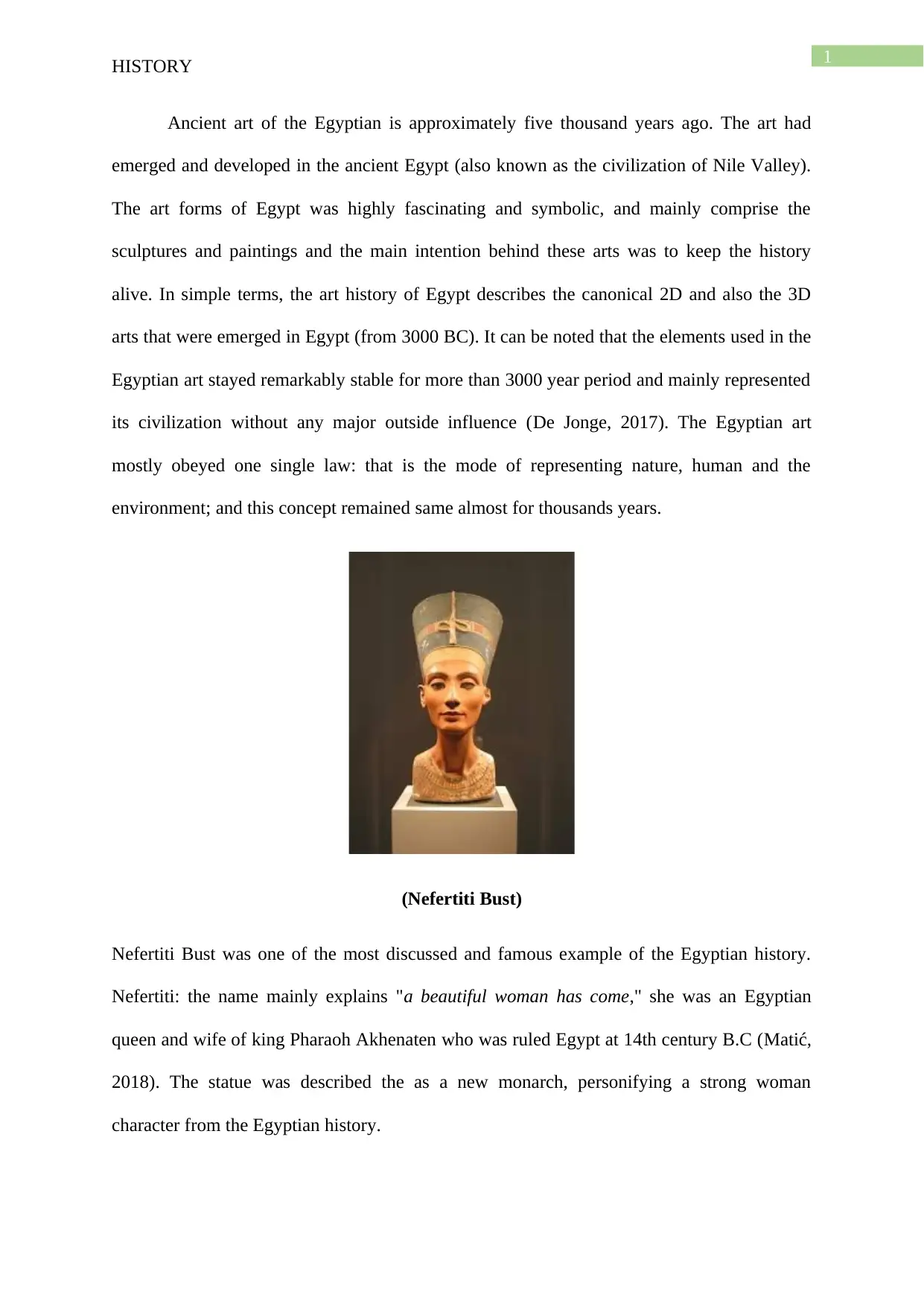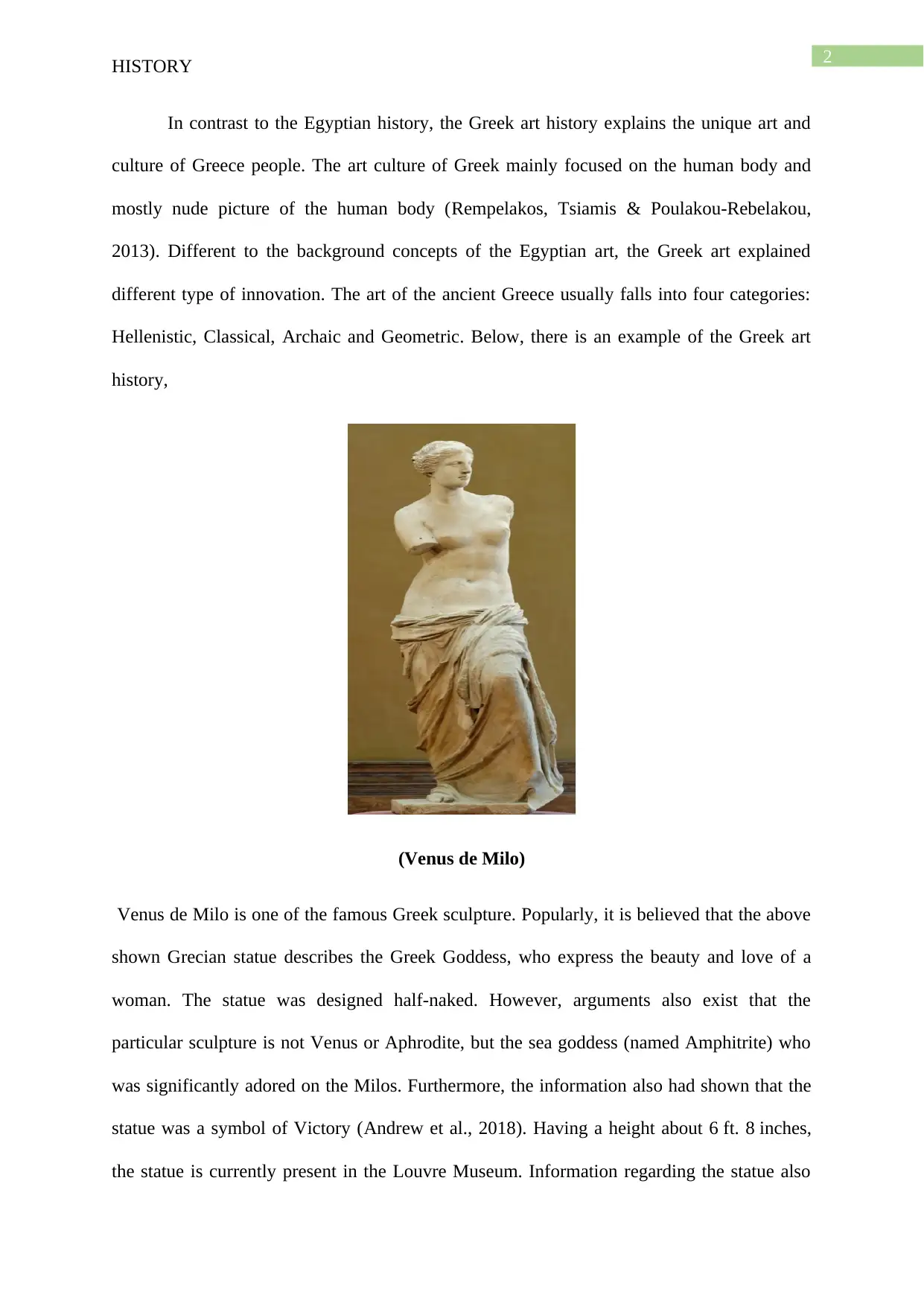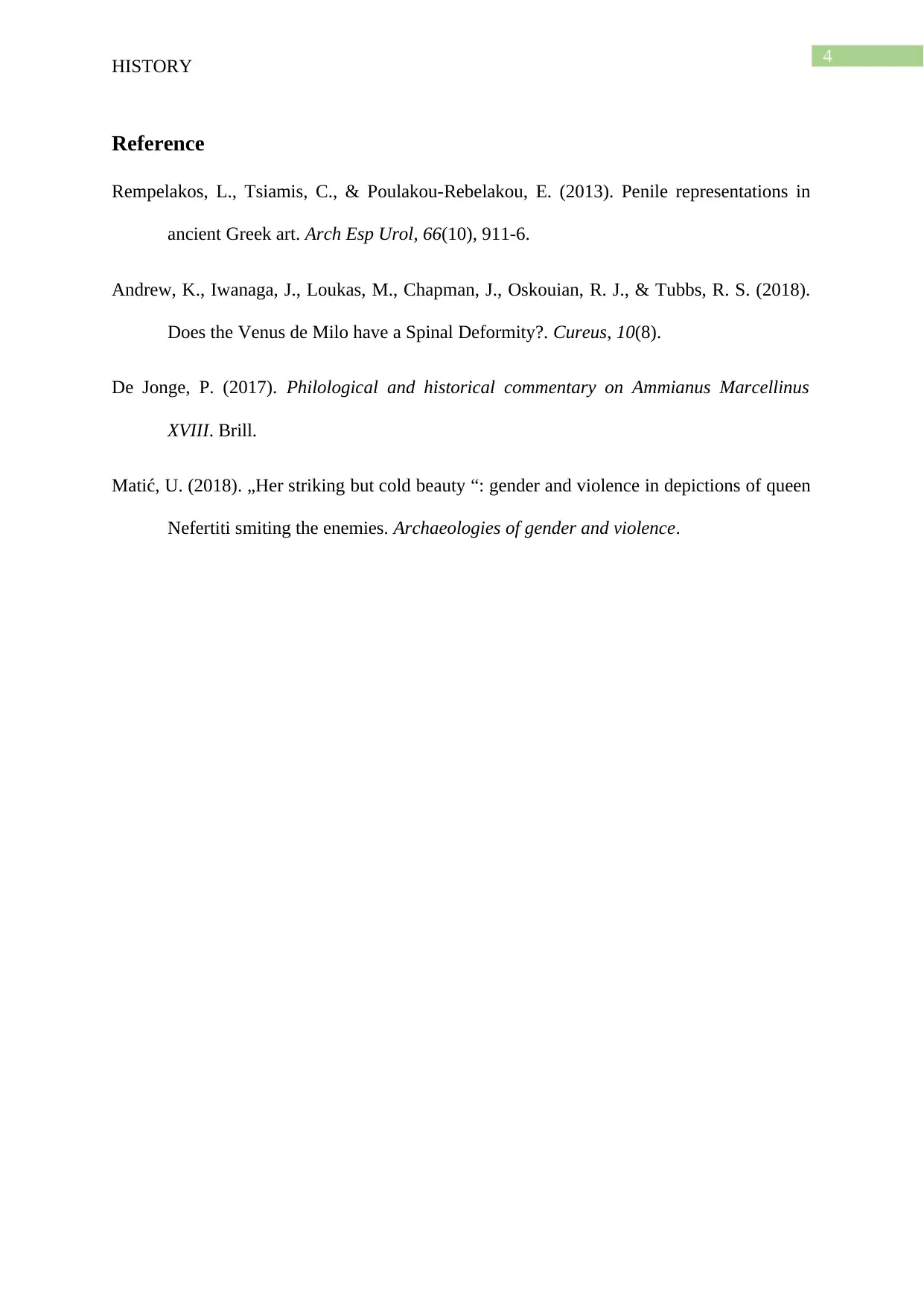A Comparative Analysis of Art and Culture in Ancient Greece and Egypt
VerifiedAdded on 2022/08/17
|5
|663
|6
Essay
AI Summary
This essay provides a comparative analysis of the art histories of ancient Greece and Egypt. It begins by exploring the symbolic and canonical art forms of ancient Egypt, highlighting the sculptures and paintings that aimed to preserve history, and discusses the elements that remained stable for thousands of years, using the Nefertiti Bust as an example. The essay then contrasts this with the art and culture of ancient Greece, focusing on its emphasis on the human body and its innovations in art, categorizing the art into Hellenistic, Classical, Archaic, and Geometric periods. The Venus de Milo is presented as a key example of Greek sculpture. The essay references key sources to support its arguments, providing a comprehensive overview of the contrasting artistic and cultural values of these two ancient civilizations, and the lasting impact of their art.
1 out of 5






![[object Object]](/_next/static/media/star-bottom.7253800d.svg)